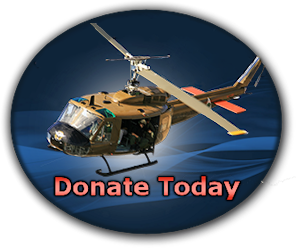Other Army Helicopter Aviation Units in Vietnam
Miscellaneous units made up the remainder of Army helicopter aviation in Vietnam.
Although not the focus of EMU INC., they deserve at least a brief mention:
1. Aerial Weapons Companies (AWC’s) were comprised entirely of gunships to provide additional support to Assault Helicopter Companies, Air Cavalry Troops and ground elements whenever the need arose. Some AWC’s were part of divisional Assault Helicopter Battalions. Others served independently in Combat Aviation Battalions. D Company/158th Assault Helicopter Battalion was a good example of the former. The 235th AWC of the 164th Aviation Group was a good example of the latter. Within the 1st Air Cavalry Division and the 101st Airborne/Airmobile Division, similar units within the artillery branch were formed. These were known as Aerial Rocket Artillery (ARA) and had essentially the same mission as AWC’s. The most conspicuous of these units was the 2nd Battalion/20th Artillery of the 1st Air Cavalry Division.
2. Command & Control Companies (sometimes referred to simply as Aviation Companies) provided helicopter support for the brass. Some were converted Assault Helicopter Companies and others were formed specifically for this purpose. Whatever their origin, their mission was to provide liaison, transportation and command & control for senior officers in all commands. A typical example of these units was the 120th Aviation Company of the 1st Aviation Brigade, which operated from the sprawling Long Binh base complex for much of the war.
3. Heavy Helicopter Companies (HHC’s), of which there were very few, utilized the CH-54 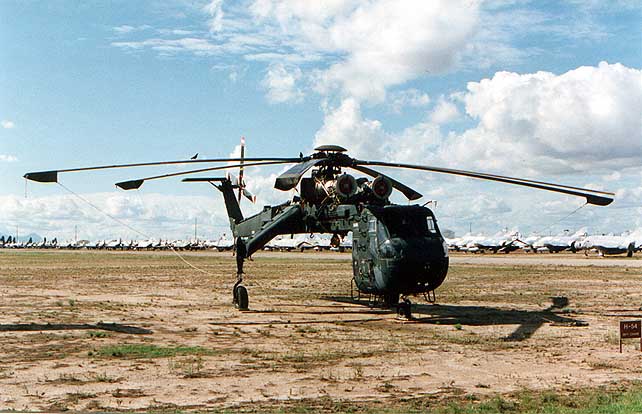 "flying crane" which had the greatest lift capacity of any Army helicopter during the Vietnam War. These aircraft were utilized solely for lifting very heavy loads in relatively secure areas due to their extreme vulnerability to ground fire. The 478th HHC of the 11th Aviation Group was the longest serving of these units.
"flying crane" which had the greatest lift capacity of any Army helicopter during the Vietnam War. These aircraft were utilized solely for lifting very heavy loads in relatively secure areas due to their extreme vulnerability to ground fire. The 478th HHC of the 11th Aviation Group was the longest serving of these units.
4. Assault Support Helicopter Companies and Battalions (ASHC’s and ASHB’s) were numerous and utilized the CH-47 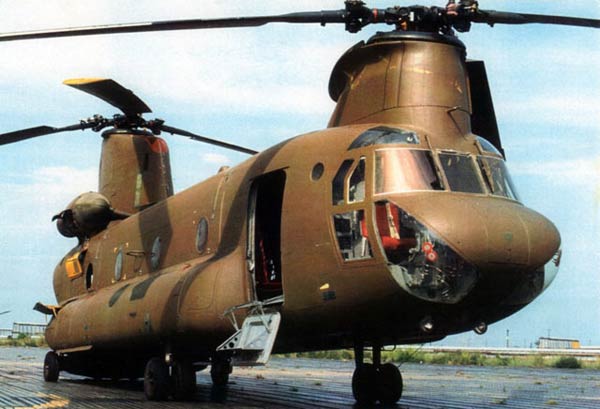 Chinook to provide "medium lift" capability above the capacity of the UH-1 and below that of the CH-54. The CH-47 replaced the obsolescent CH-37
Chinook to provide "medium lift" capability above the capacity of the UH-1 and below that of the CH-54. The CH-47 replaced the obsolescent CH-37 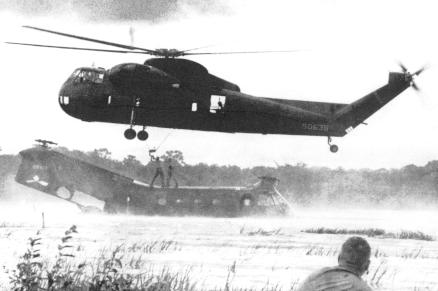 Mojave as the primary medium lift helicopter in the Army beginning in 1965. Within the 1st Air Cavalry Division, some of these units were organized as complete battalions, such as the 228th ASHB. Outside of the 1st Cav, CH-47’s were organized into independent ASHC’s, which generally served in Combat Aviation Battalions. The 180th ASHC of the 17th Aviation Group was one of the longest serving of these units. As with the CH-54’s, CH-47’s were extremely vulnerable to ground fire and, as their unit designations imply, were utilized primarily in assault support missions to move artillery, heavy equipment, supplies and occasionally troops from one relatively secure location to another. However, there were numerous exceptions to this rule and many CH-47 crews were killed and wounded during dangerous resupply and troop extraction operations. For a time, the 1st Air Cavalry Division even used CH-47’s as gunships (the aptly named “Guns A-Go-Go”) but this experiment was soon abandoned when the test aircraft, although heavily armed, proved vulnerable in combat operations.
Mojave as the primary medium lift helicopter in the Army beginning in 1965. Within the 1st Air Cavalry Division, some of these units were organized as complete battalions, such as the 228th ASHB. Outside of the 1st Cav, CH-47’s were organized into independent ASHC’s, which generally served in Combat Aviation Battalions. The 180th ASHC of the 17th Aviation Group was one of the longest serving of these units. As with the CH-54’s, CH-47’s were extremely vulnerable to ground fire and, as their unit designations imply, were utilized primarily in assault support missions to move artillery, heavy equipment, supplies and occasionally troops from one relatively secure location to another. However, there were numerous exceptions to this rule and many CH-47 crews were killed and wounded during dangerous resupply and troop extraction operations. For a time, the 1st Air Cavalry Division even used CH-47’s as gunships (the aptly named “Guns A-Go-Go”) but this experiment was soon abandoned when the test aircraft, although heavily armed, proved vulnerable in combat operations.
5. Medevac, 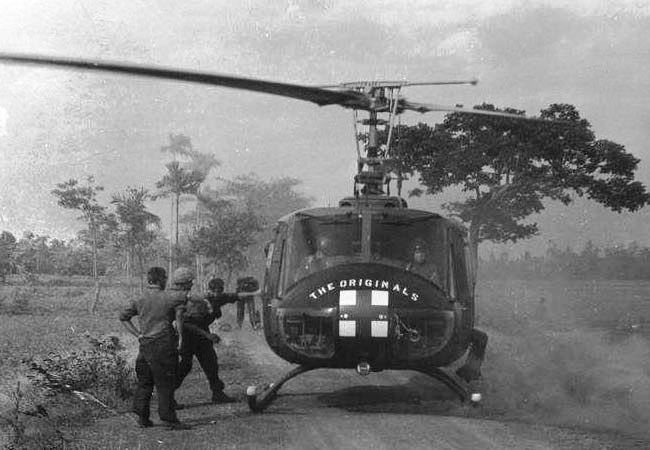 Detachments used Hueys to conduct medical evacuations of wounded troops to hospitals for immediate treatment. They were often organic to infantry divisions or medical units and consisted of several specially equipped UH-1’s with a normal crew plus a combat medic. Although AHC’s and ACT’s were responsible for many emergency medical evacuations, Medevac Detachments conducted a high percentage of medical evacuations during the war. Because medevac helicopters were required by the Geneva Convention to bear distinctive Red Cross emblems and to be unarmed, they made easy targets. For this reason, Medevac Detachments often suffered significant casualties performing their mission. Medevac crews were universally considered the most selfless of all combat aircrews in the war. The 57th Medevac Detachment was one of the more illustrious of these units.
Detachments used Hueys to conduct medical evacuations of wounded troops to hospitals for immediate treatment. They were often organic to infantry divisions or medical units and consisted of several specially equipped UH-1’s with a normal crew plus a combat medic. Although AHC’s and ACT’s were responsible for many emergency medical evacuations, Medevac Detachments conducted a high percentage of medical evacuations during the war. Because medevac helicopters were required by the Geneva Convention to bear distinctive Red Cross emblems and to be unarmed, they made easy targets. For this reason, Medevac Detachments often suffered significant casualties performing their mission. Medevac crews were universally considered the most selfless of all combat aircrews in the war. The 57th Medevac Detachment was one of the more illustrious of these units.
6. In addition to Assault Helicopter Companies and Battalions, numerous smaller detachments and separate platoon sized units added assault helicopter capability to specific tasks, operations or organizations. These were primarily developed early in the war when the Army’s presence in Vietnam was expanding at a pace faster than could be supported by available aviation units. As the war progressed, other small units were formed for specialized training and weapon testing. A good example of these smaller units was the 145th Airlift Platoon.
7. Miscellaneous infantry, artillery, engineer and support units also utilized helicopters for liaison and other combat support missions. The total number of these aircraft committed to the war effort, although considerable, was always small compared to the great fleets of Hueys, Scouts, Cobras and Chinooks of the Assault Helicopter Companies, Air Cavalry Troops and Assault Support Helicopter Companies that dominated the skies of Vietnam.



